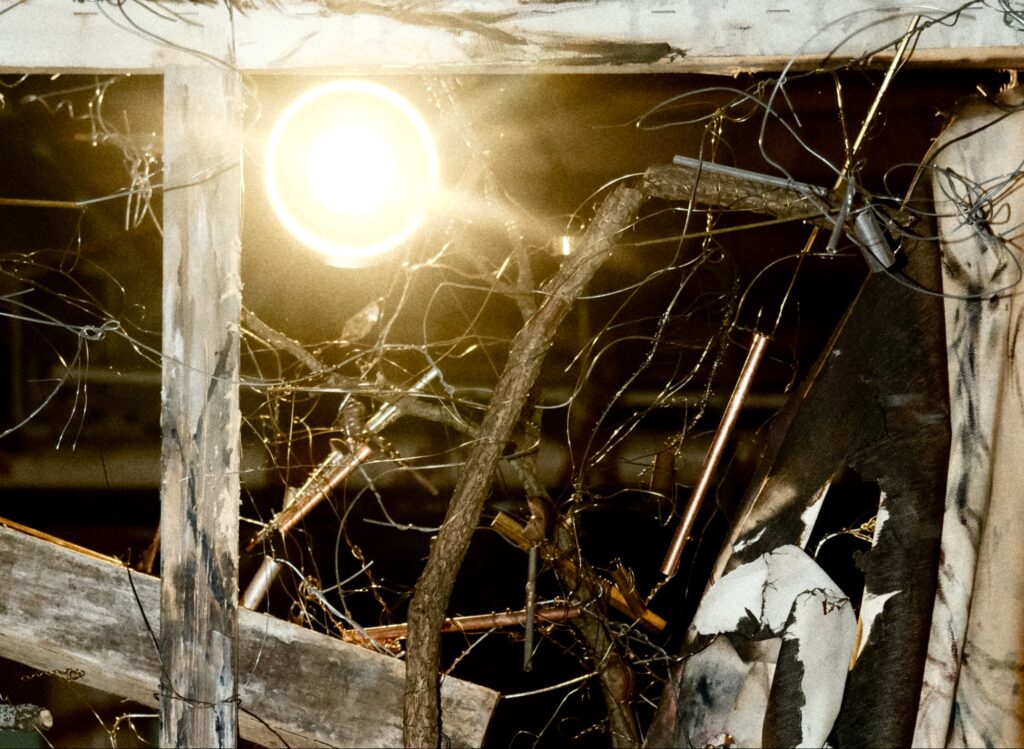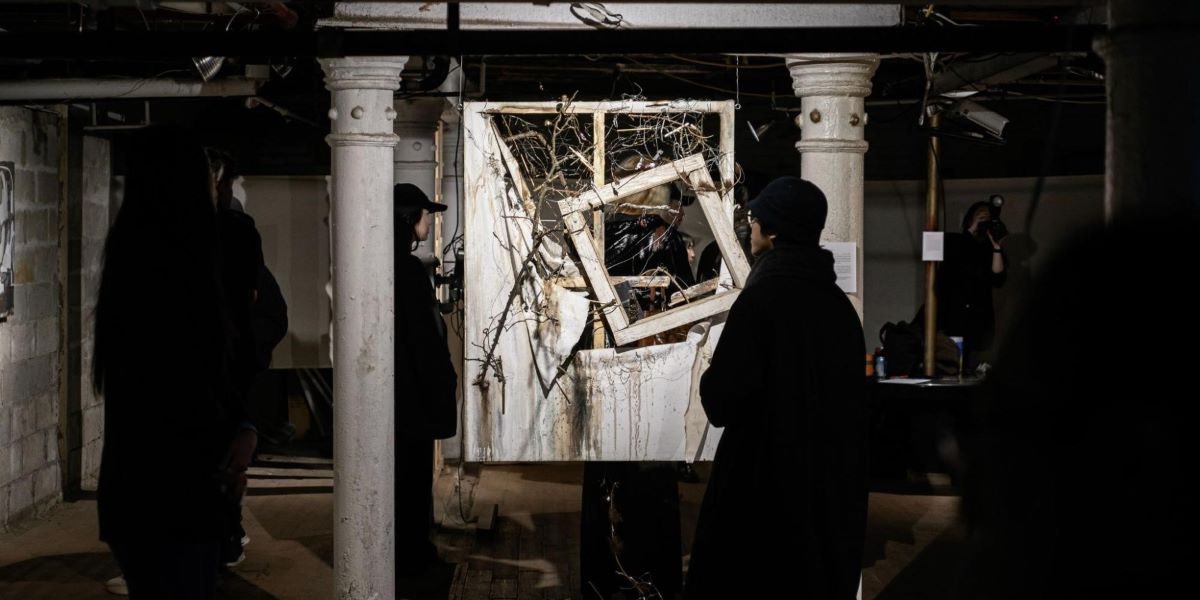By: CiCi Zhang
From December 11 to 18, 2024, the art exhibition “Phantom Dimensions”, was held at the Black Brick Project Gallery in New York. Among the highlights was artist Hongshan Feng’s installation piece <We>, which garnered significant attention for its masterful integration of space and symbolism. The work delves into the complexities of human struggle and resilience within modern societal frameworks, offering a distinctive and thought-provoking artistic narrative.
The inspiration for <We> stemmed from Hongshan’s field research in an abandoned hospital. Once a symbol of healing and hope, the desolate and decayed environment evoked feelings of oppression and solitude. The remnants of human presence—faded objects and traces of activity—became metaphors for the overlooked and constrained individual within societal structures while also reflecting the existential tensions between despair and perseverance. Through <We>, Hongshan sought to recreate this layered emotional landscape and encourage viewers to reflect on the potential for breakthroughs within imposed limitations.

At the heart of the installation lies the central motif of a “window,” serving as a dual symbol of restriction and possibility. The window is positioned prominently within the piece and encapsulates the tension between containment and connection. “The window is both a boundary and a bridge,” Hongshan explains. “It reminds us that even within confines, there is always the potential to transcend. Through the window, viewers perceive the physical space and are invited to reconsider their roles and positions within societal constructs.” The interactive engagement with the window imbues the work with a dynamic vitality, drawing viewers into a dialogue with the themes of identity and freedom.
Hongshan’s artistic practice is deeply rooted in the principles of Eastern aesthetics. Growing up surrounded by the wetlands of Hangzhou, she developed a profound connection to nature and traditional Chinese art forms, particularly the spatial philosophies of shan shui painting, calligraphy, and the intricate interplay of “interior and exterior” in classical architecture. The emphasis on subtlety, metaphor, and introspection in Eastern art has become a defining feature of her work. Hongshan employs materials such as ceramics, lacquer, and ink, seamlessly integrating these traditional mediums into contemporary installation art. This synthesis of tradition and modernity allows her to preserve the depth of cultural heritage while extending its relevance to addressing the complexities of modern society.

“The concept of liubai (negative space) and the fluid relationship between the inner and outer worlds in Eastern art have shaped my creative philosophy,” she shares. “Modern media, with its immediacy and directness, complements this foundation by enabling me to articulate responses to pressing social issues. My goal is to fuse the depth of tradition with the expressive power of contemporary language, creating works that resonate with both past and present.”

In <We>, this fusion of traditional philosophy and modern media is evident in the intricate interplay of materials, light, and spatial composition. As a central element, the window embodies the dualities of restriction and freedom, inviting viewers to experience both the philosophical depth of Eastern aesthetics and the immediacy of contemporary visual art. This integration elevates the installation from a static object to a living dialogue, engaging audiences in a multilayered narrative.
Looking ahead, Hongshan remains committed to an open-ended exploration of artistic possibilities. She envisions her practice as a platform to bridge cultural traditions and contemporary contexts, addressing the social, historical, and personal dimensions of human experience. “Art should not be confined by singular forms or perspectives,” she asserts. “By embracing diverse cultural viewpoints and media, I aim to extend the language of tradition, uncovering new ways to respond to the complexities of our time.”
<We> is a compelling testament to Hongshan’s ability to merge spatial, symbolic, and emotional dimensions into a cohesive narrative. Through her nuanced artistic language, she invites audiences to reflect on their own constraints and freedoms and the societal frameworks that shape identity. Her work bridges the past and present and opens a window to the future, offering a profound meditation on the resilience of the human spirit.
Published by Drake M.

















